Spiders are creatures that are both familiar and feared, frequently encountered, and yet sometimes capable of inducing serious injury or death through their venom. The spider is a form of creature that may induce instinctive anxiety in humans that may be regarded as a phobia. In certain species, this apprehension is justified. In other species, little danger to humans may exist, but eerie reproductive ways, predation habits, or bizarre physical attributes just might cause one to lose some sleep.
Plant-Eating Spider
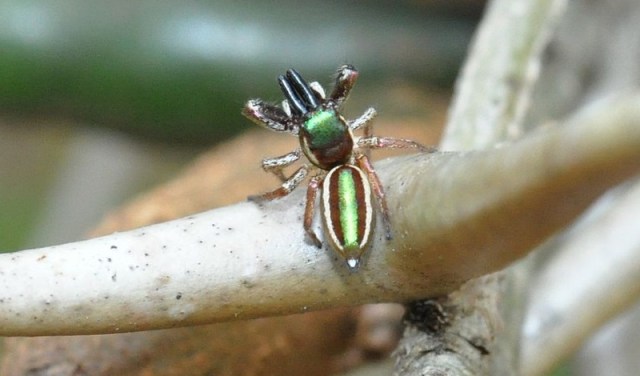
https://creationscience4kids.com
There is a plant-eating spider on this planet. Native to areas with acacia vegetation in southeastern Mexico and northwestern Costa Rica, Bagheera kiplingi feeds on protein and lipid-rich Beltian bodies, small extensions found on the tips of the acacias on which this species lives. There is a complication to living on the acacia plants in the form of a mutual relationship between the plant and the ants residing in the hollow thorns of the acacia. The ants attack animals that try to eat the acacia. In return, the ants feed on the Beltian bodies and shelter in the thorns.
Rarely, these spiders will feed on the larvae of the dangerous ants, but they are primarily herbivorous, leading an exceedingly unusual life.
Pelican Spider
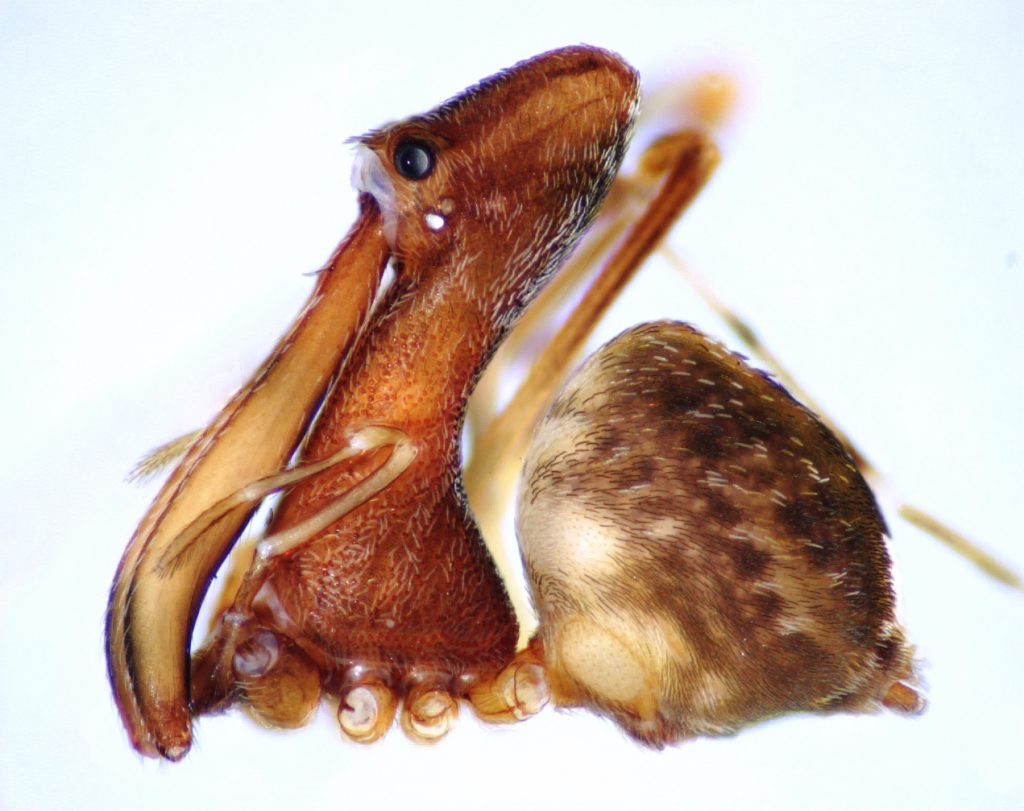
The outlandish pelican spiders of Australia, Madagascar, and South Africa; looking uncannily like a tiny replica of its namesake bird, pelican spiders have dramatically extended jaw parts and necks. An elongated neck extends from the animal’s small body, with a head on top of the neck that has the angular shape of a real pelican. Tiny eyes are located at the front of the birdlike head, where dramatically elongated chelicerae, jawlike structures with projecting fangs, extend downward in parallel with the neck and slightly beyond.
Australian Jumping Spider
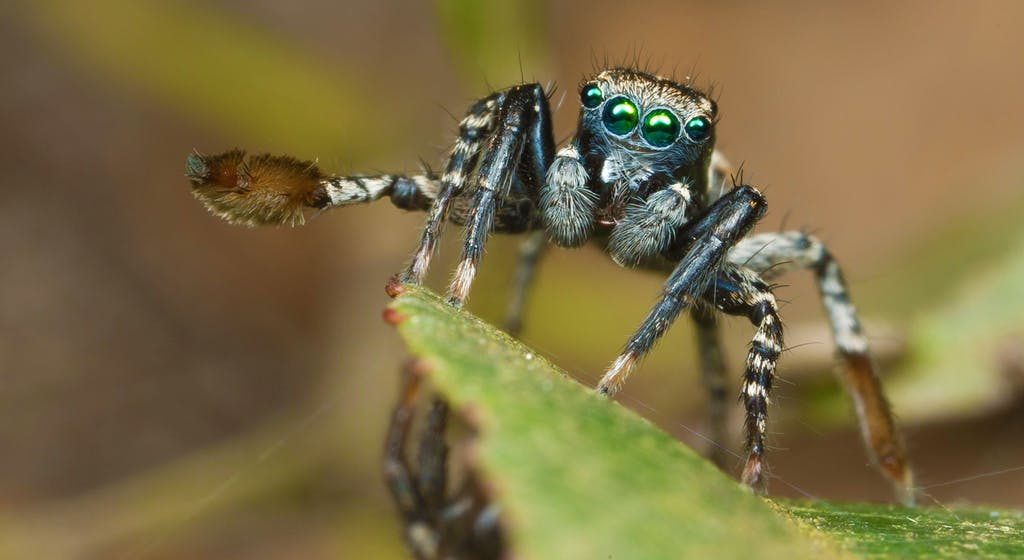
http://www.nationalgeographic.com.au
The male Australian jumping spider spider (Jotus remus), discovered in 2014 by Australian photographer and Australian Department of Agriculture staff member Jurgen Otto is still wary of being attacked by the female. The male plays hard to get in a slightly coy and even deceptive way to attract her attention. This diminutive spider has small paddles on two specially modified legs, which it waves as it plays hide-and-seek behind leaves to impress females. The “peekaboo” fashion of behavior continues until the female is likely to be in a receptive position and less prone to suddenly attack the male. At this point, the male abandons his display and mates with her, his colorful patterns still standing out in the animal’s vegetated habitat.
Ogre-Faced Spider

The tropical and subtropical spiders in genus Deinopis have eerie faces and exceptional hunting ability. While most spiders have eight eyes but poor vision, the ogre-faced spiders are named for their bizarre, elongated faces and enormous, “posterior median eyes.”The enormous eyes resemble a huge pair of binoculars embedded in the spider’s face, dwarfing its six smaller eyes and lending extraordinary visual capabilities. These abilities include exceptional night vision and clarity of view, enabling prey to be precisely tracked and targeted. With special hairs on its legs and remarkable dexterity, ogre-faced spiders weave a unique, net-shaped structure in lieu of a typical web. This structure is held between the four front legs and hurled upon passing insects, either flying or walking.
Spitting Spider
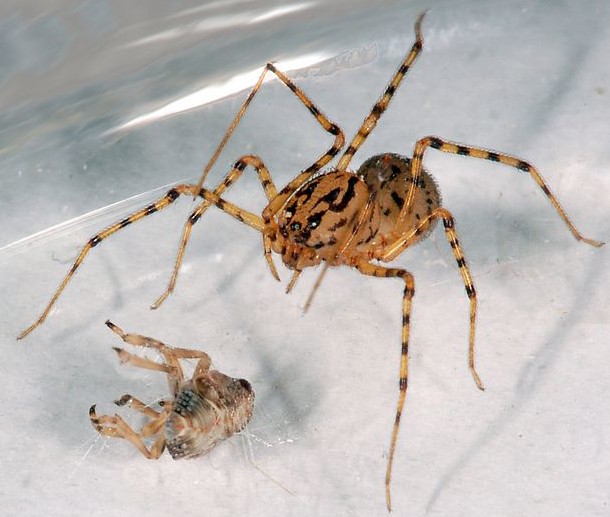
Forgoing a web for a more mobile mode of hunting, members of the family Scytodidae, the spitting spiders, constitute a particularly unique form of arachnid exceptionalism. Spitting spiders lack the silk-producing spinnerets common to more typical spiders. They capture the prey by spitting a sticky, venom-infused mixture of fluids that immobilize the prey. The fluids are expelled from the poison glands and then fall upon the prey. Spider seizes the victim and injects powerful venom that liquefies the insides of the prey before consumption. With a spindly appearance, the spiders have notably large venom glands to facilitate their copious spraying of venom and mucus.
Black And Yellow Garden Spider
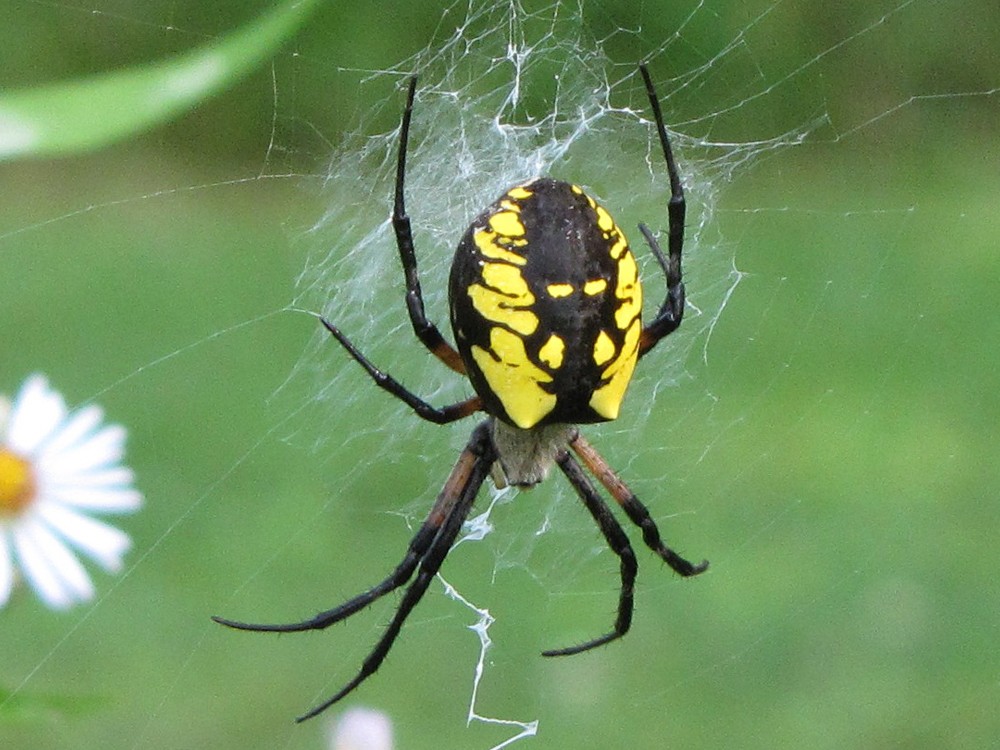
https://haydensanimalfacts.com
Spiders are frequently plucked from their webs by foraging birds, but a black and yellow garden spider may discourage such a hunter through its beelike or wasplike appearance. The logically named black and yellow garden spider is a fairly normal spider of the orb weaver variety found throughout much of North America. The yellow garden spider, like many arachnids, is a species where sexual dimorphism means that males get the short end of the stick. Black and yellow garden spiders may consume the very wasps and bees that their appearance mimics should one of these insects become stuck in its web.
Sowbug Killer Spider
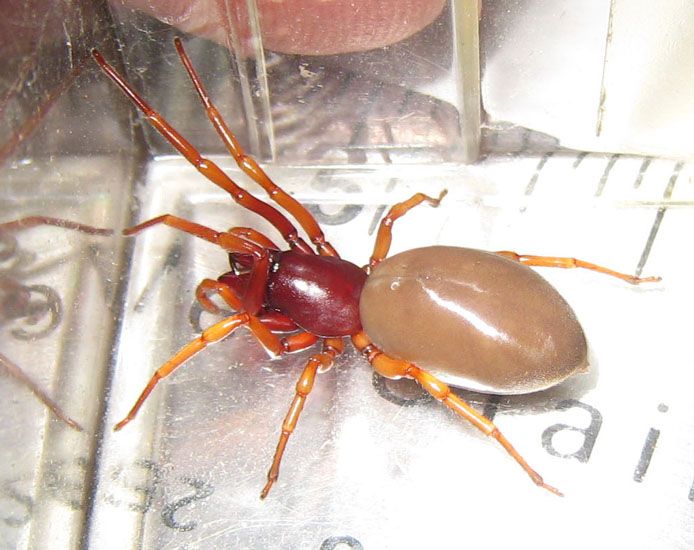
For various reasons, many people dislike sowbugs, more correctly known as woodbugs or woodlice, despite their actual classification as crustaceans. With a reddish thorax, colorful legs, and beige abdomen, these spiders are unnervingly smooth and shiny in appearance with enormous fangs for their fairly respectable body size. Rather than spinning a web, the spider stalks and ambushes its land-dwelling crustacean prey before injecting venom. Although this species has not been proven to be seriously venomous to humans, there is cause for concern in handling this oversize, fang-bearing spider. Skin irritations known as erythema were attributed to the venom of this species.
Scorpion-Tailed Spider
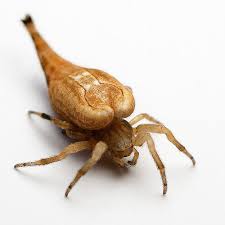
Native to Australia and resembling a scorpion climbing in a spider’s web at first glance, the female of this remarkable species has a yellowish color. Despite the animal’s outlandish appearance, scorpion-tailed spiders are very similar to regular web-making spiders, except for the female’s remarkable body appendage. Extending from the abdomen is a giant formation that exceeds the length of the spider itself. The result of bearing the appendage is a rather leaflike appearance, but curiously, the appearance is also remarkably close to that of a genuine scorpion.
Whip Spider
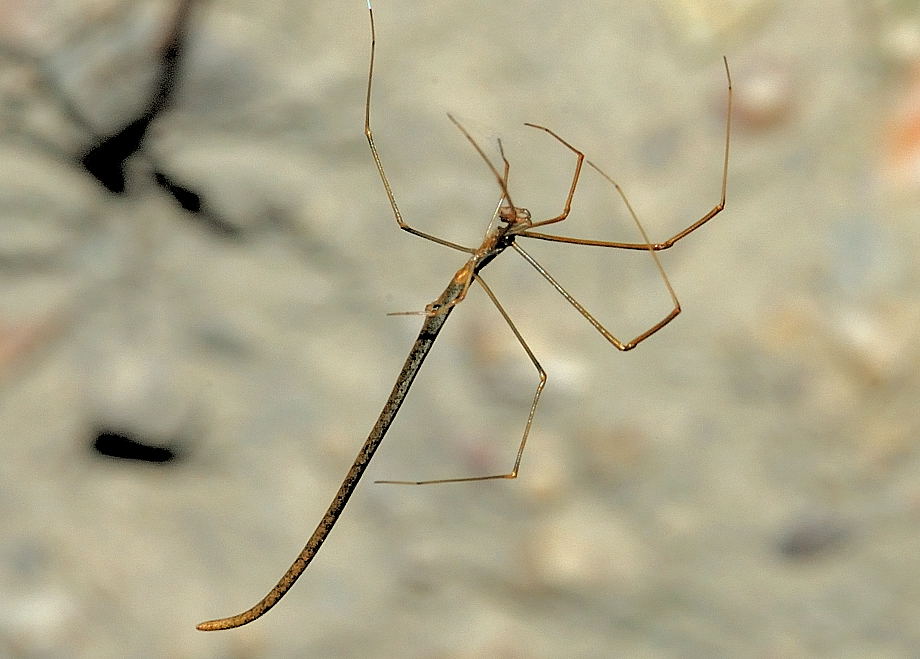
http://www.brisbaneinsects.com
The whip spider (Argyrodes colubrinus) of Australia has eight legs like all spiders, but the rounded abdomen typical of the spider form is replaced by a sticklike form with a remarkable length-to-width ratio. Suspended from a simple, minimalist web consisting of a few strands of silk, the spider drops down to capture its prey.
Related Content
Animals That Paid the Price of Tourist Stupidity and Cruelty